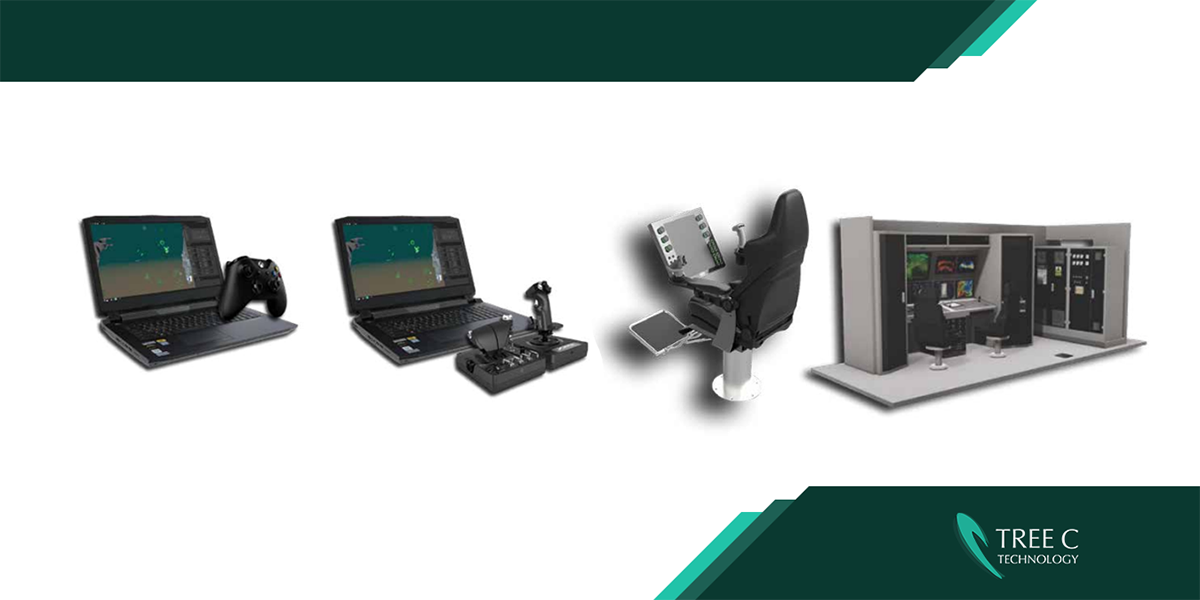What Hardware Independent Simulators Mean For Your Offshore Operations

Simulator technology is continuously evolving. That means perceptions of what it is, and what it does, sometimes need to play catch up. For example, many people in the offshore industry think of a simulator as a piece of physical equipment, designed and built for a specific purpose, such as training. We’re here to tell you that it’s much more than that.
What is a hardware independent simulator?
A hardware independent simulator can be installed and run in different environments to serve multiple purposes. It’s not confined to a single use or even one piece of hardware. It gives offshore companies a flexible asset for a variety of purposes including training scenarios, engineering assignments and marketing demonstrations.
In fact, thanks to Tree C’s versatile framework, our highly-flexible simulators can be iteratively developed and extended over time to serve a growing number of uses. New 3D content and new scenarios can be added to our well-maintainable systems efficiently. They give everyone in your organization access to a simulated environment that can add value on multiple fronts.
At Tree C, supplying and maintaining hardware is not our core business (although we can deliver turn-key solutions or offer expert advice on your setup). What we specialize in is simulator software. More specifically, we provide flexible simulators that not only connect with actual control consoles, but also run on a laptop.
Why hardware independent simulators are used
Installed on a desktop computer or laptop, our simulator is used by offshore companies to plan operations, placing multiple vessels in a virtual copy of the real environment. They also test out scenarios or modifications to machinery using simple devices such as a game console controller.
Let’s take dredging for example. The simulator software can be connected to real-world controls and screens to train operators. At the same time, engineers can have the simulator installed on a laptop to support design and modifications. It might also be set up for marketing purposes to show a demo to investors or other stakeholders.
The added value of hardware independence
These days, everyone is looking for more from less. By decoupling simulator software from a fixed hardware setup, you immediately get more value from it. Rather than investing in a single-purpose solution (such as training) your investment pays off by using it for things like engineering and sales, optimizing the return on investment across multiple divisions and locations.
It’s also much more cost-effective to get a hardware independent simulator built. At Tree C Technology, hardware independence is a core feature of the software we’ve created. What’s more, we collaborate with our clients to make the software as multipurpose as possible.
The great thing about our flexible simulator framework is that even if we’re asked to produce a single purpose simulator, the software itself is still multipurpose. That means we can always help you to broaden its scope further down the line. In fact, what we generally find is that clients nearly always use our training simulators for marketing purposes as well.
There’s a good reason for that. Offshore or remote handling equipment usually operates in hazardous environments, making it inaccessible to potential investors in the real world to see. This makes it hard to quantify exactly what they’re investing in. A multipurpose simulator can help bridge the imagination gap by demonstrating complex operations before they are executed.
How to choose the right hardware for your simulator
Our top advice on buying hardware? Wait. Wait until your simulator is ready before making a purchase. That’s because hardware improves every year.
If your simulator is planned ahead of time – say months or years in advance – it’s better to postpone your hardware purchase, so you have the latest and greatest setup. This will help to optimize the speed and rendering possible inside your simulator. We generally advise using the highest grade consumer CPU (or one level down if budget is constrained) and the second-highest GPU from NVIDIA.
There are other factors to consider. If a simulator is destined for a more fixed environment, and you’re unlikely to build it out – for example with new features or multiple assets – then a less powerful device will probably suffice.
Our software is as easy to install as any other application. With administrator rights, your IT department can easily install and configure the simulator on any compatible device. And should you need any support, our technical experts are just a call away.
Get expert advice on hardware independent simulators. Speak to a specialist.